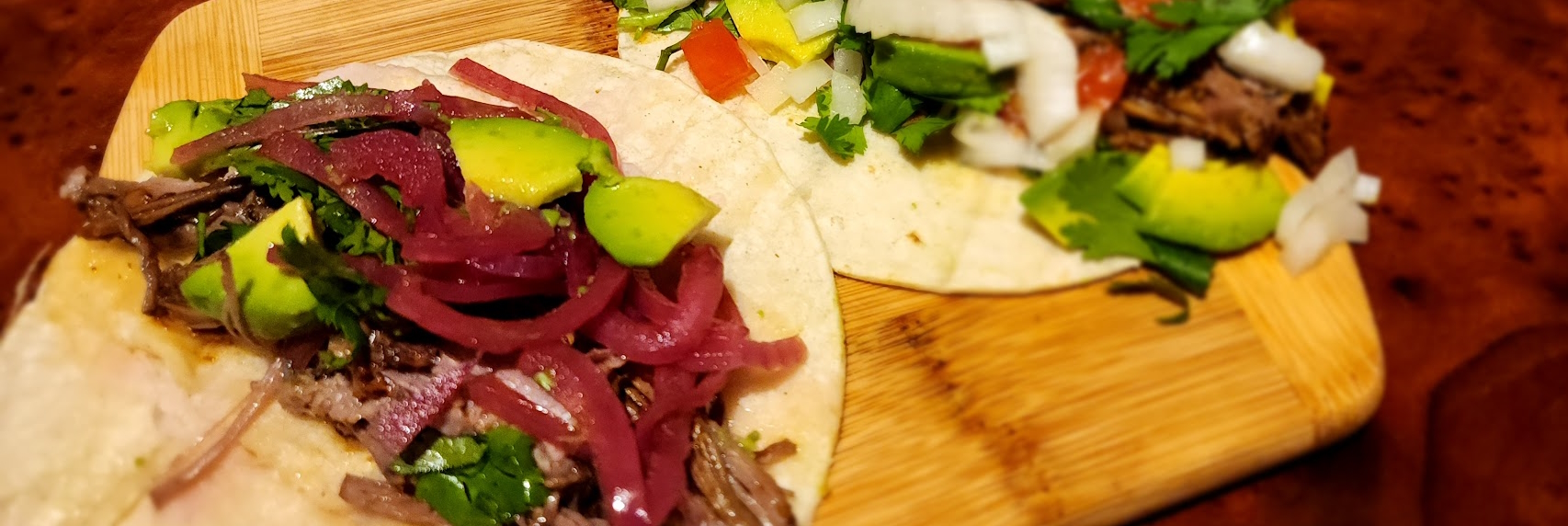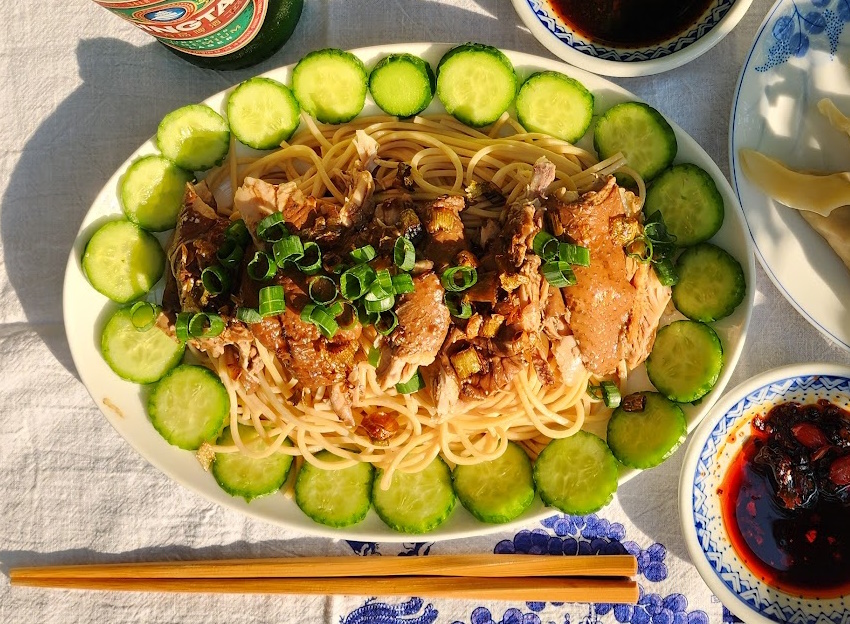Our Recipe of the Month is for Mexican Barbacoa. Succulent, slow-cooked beef, marinated in a fragrant blend of spices. Warm masa harina tortillas filled with barbacoa are a classic dish that will leave you yearning for more.

Barbacoa is thought to have originated with the Taino people of the Caribbean. The word originally denoted a cooking method of cooking meat over a grill. The word was adopted into Spanish and the English word "barbecue" is a derivative. With the Spanish conquest of Mexico, indigenous Mexicans adopted barbacoa. However, the dish evolved over time. Rather than grilling the meat, it would be wrapped in either maguey (agave) or banana leaves and slow-cooked in a pit of dirt and hot coals. Eventually making barbacoa in a slow-cooker became the accepted method of preparation. Pressure-cookers and Instant Pots have made the process of cooking barbacoa much faster and the dish can now be fully cooked in less than an hour!
Barbacoa can be eaten by itself (with beans and rice), but the most popular way is to make tacos with it. The best way is to eat it with masa harina tacos. Most commercially available corn tortillas are made from nixtamalized corn. The word nextimalli is from the indigenous Mexican language Nahuatl and refers to the processing of corn meal by cooking it in an alkaline solution. This process makes the corn more nutritious and easier to digest. The process was developed by the pre-Columbian Aztecs, Mayans, and Toltecs. It was so essential to the Aztecs that it is even part of their origin myth in which the goddess Cihuacoatl gives humans corn and teaches them how to nixtamalize it. Corn tortillas are commercially available as yellow, white, blue or red tortillas. Products sometimes called "soft" corn tortillas often have wheat flour added to them. There is a world of difference, however, between store-bought and homemade tortillas. Store-bought tortillas are drier, harder, and less pliable than homemade tortillas. Freshly made tortillas are also more aromatic and tastier. It takes a lot of practice to get them right, so patience is a definite virtue. There are numerous videos on how to make your own tacos from masa harina. Having a tortilla press is a great advantage. In our experience, the greatest challenge is the stickiness of the dough. Many cooks use wax paper or plastic sandwich bags (with the side seams cut) to avoid the dough sticking to the tortilla press, and it still requires a bit of skill to separate the tortilla from the wax paper or plastic. The next part is easier; the tortilla is fried on both sides (with minimal oil) and you will know they are done when they puff up when cooking the 2nd side.
A key ingredient to barbacoa are dried chilies that have to be rehydrated before use. Sometimes, the peppers are both dried and smoked. The use of dried chilies (as opposed to fresh) is very common in Mexican cuisine. Dried chilies typically have a greater depth of flavor than fresh ones. Many Mexican dried chilies go by different names than the fresh chilies they are made from. Guajillo Peppers in their fresh form are called "Chile Mirasol", before they are dried Ancho peppers are known as Poblano peppers, and the smoky-tasting Chipotle peppers are made from fully ripened (red) Jalapenos. There are also two types of Chipotle peppers, "Morita" which are more common in the US, and Chipotle Meco (also known as Chili Ahumado or Típico) which are more common in Mexico. Chipotle Meco peppers are smoked for nearly twice as long as the Morita variety. Chipotle chilies are often sold canned or bottled in Adobo sauce. Mexican Adobo sauce is made from dried peppers, onion, garlic, Mexican oregano, cumin, black pepper, and vinegar.
The most common toppings for barbacoa tacos are cilantro, finely chopped onions, fresh salsa, guacamole, lime juice, crumbled queso fresco, and, our favorite, pickled red onions.
Cook's Notes:
Barbacoa is typically made with beef, although lamb and goat are sometimes used. Beef cheek meat is the preferred cut, but if that is not available brisket, or chuck roast can be substituted. Avoid leaner cuts as the meat will not end up as tender.
Mexican oregano is used in this dish. It is considered to be milder but more complex in taste to Mediterranean Oregano.
Marinating the beef overnight is optional.
Ingredients:
- 3 pounds beef cheeks, brisket, or chuck roast
- 1/2 cup beef broth
- 1/4 cup apple cider vinegar
- 2-3 chipotle peppers in adobo sauce
- 1 tablespoon adobo sauce (from the can of chipotle peppers)
- 4 cloves of garlic, minced
- A pinch of dried thyme leaves
- 2 bay leaves
- 1 tablespoon ground cumin
- 1 tablespoon dried Mexican oregano
- 2 teaspoons salt
- 1 teaspoon black pepper
- Juice of 1 lime
- Warm tortillas, for serving
- Toppings of your choice (e.g. chopped onions, pickled red onions, fresh cilantro, avocado slices, fresh salsa)
Preparation:
- Trim the excess fat from the beef and cut it into large chunks.
- In a blender or food processor, combine the beef broth, apple cider vinegar, thyme, chipotle peppers, adobo sauce, garlic, cumin, oregano, salt, black pepper, and lime juice. Blend until smooth.
- Add the beef, sauce, and bay leaves to a covered dish or container and marinate overnight (up to 24 hours).
- Pour the marinated beef and sauce into your Instant Pot and cook on high pressure for 60 minutes. If you use a slow-cooker, 8 hours should be sufficient.
- Once the cooking is complete, let the pot release pressure naturally for 15 minutes, then manually release any remaining pressure.
- Remove the beef from the pot and discard the bay leaves.
- Use two forks to shred the barbacoa, discarding any excess fat or gristle.
- Serve the barbacoa in warm tortillas and top with your favorite toppings, such as chopped onions, fresh cilantro, and avocado slices.
- Enjoy your delicious and flavorful barbacoa beef, infused with the smoky heat of chipotle peppers in adobo sauce, made quickly and easily in the Instant Pot!
¡Buen provecho!
Recipe by T. Johnston-O'Neill
Photos by Shari Johnston-O'Neill









